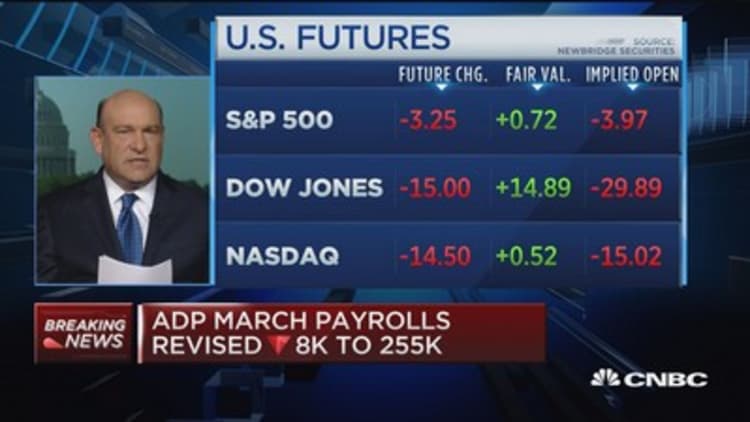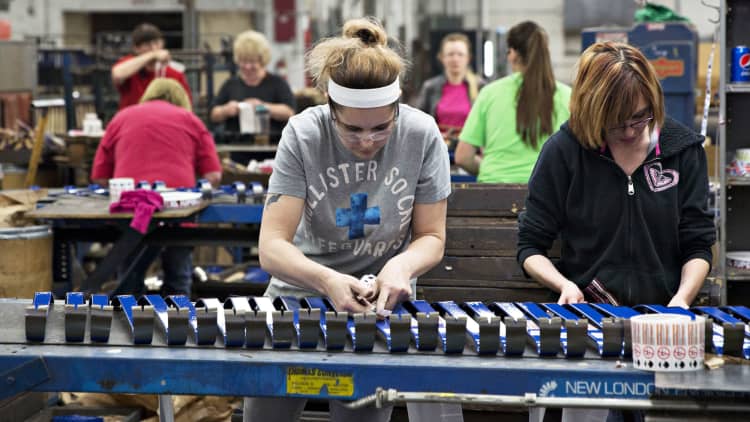Job growth in April is expected to have nearly doubled
Economists forecast 185,000 nonfarm payrolls for April, up from a surprising 98,000 for March, according to Thomson Reuters. The unemployment rate is expected to rise to 4.6 percent from 4.5 percent, and average hourly wages are expected to grow by 0.3 percent, up from 0.2 percent in March. The employment report is released at 8:30 a.m. EDT Friday.
March's slump was surprising after several months of strong growth, and the three-month average is 178,000, which many economists see as being close to trend growth. But economists disagree on how much of March's slump will be made up in April.
Treasury yields were higher ahead of the report. Yields move inversely to price, and the 10-year yield pushed above 2.35 percent.
"The Fed needs the report to be good," said Aaron Kohli, rate strategist at BMO.

The April jobs report is the most significant second-quarter data after
One negative trend that could continue to show up is the decline in retail-sector jobs, as brick-and-mortar retailers shut stores and go bankrupt.
Diane Swonk, CEO of DS Economics, expects just 145,000 jobs, but she sees the trend more like 175,000. "There were a lot of retail closings, and this is the time when you tend to hire up, but you could have another retail loss," she said.
Goldman Sachs economists said retail employment growth has fallen from a historical trend of 15,000 to 20,000 per month to an average decline of 5,000 over the past six months.
"While some of the March weakness was likely weather-related, we expect the structural shift of retail sales from brick and mortar stores toward less labor-intensive e-commerce firms will continue to weigh on payroll growth in that industry, with the impact on the order of 10,000 per month, relative to its previous trend," the Goldman economists wrote. They said the
The Goldman Sachs economists forecast 200,000 nonfarm payrolls for April and expect a weather-related boost of between 25,000 and 40,000 as workers returned to work after March storms. They noted that payroll growth in the New England, mid-Atlantic and eastern
Barclays economists also expect to see a bounce back from
"We're forecasting 225,000. We looked at a lot of the underlying details last month, and I think
Gapen said, for instance, there were big declines in the manufacturing states of Ohio,
Gapen said the timing of the Easter and Passover holidays may also have been a factor. "We think that could be a factor in depressing, on a seasonally adjusted basis, some of the service-sector
Swonk said the federal government's ongoing hiring freeze likely reduced public sector payrolls by 10,000 jobs. She also said uncertainty over the Affordable Care Act, or Obamacare, may also have resulted in a slowing in health-care hiring.
"There was a slowdown in health care last month, and it's expected to slow again," she said. The House on Thursday voted to do away with Obamacare, but now the bill must pass the Senate, where it faces opposition.
"The labor markets are getting tighter, but there's a risk that the jobs number could be disappointing a bit," she said. "We got fooled by the 200,000-plus months, and the reality is you have to do a moving average. We're still pretty much on trend."
Watch: March jobs number



